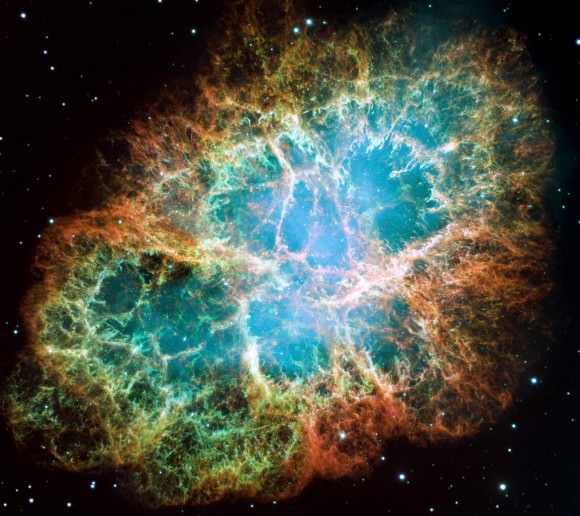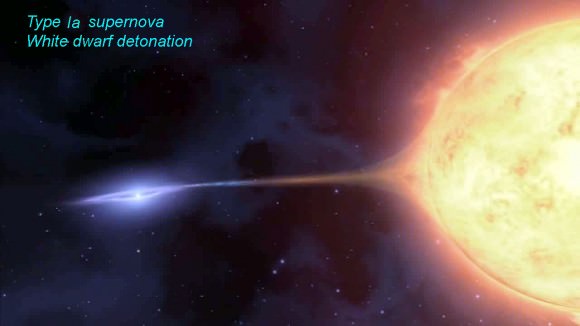There are a few places in the Universe that defy comprehension. And supernovae have got to be the most extreme places you can imagine. We’re talking about a star with potentially dozens of times the size and mass of our own Sun that violently dies in a faction of a second.
Faster than it take me to say the word supernova, a complete star collapses in on itself, creating a black hole, forming the denser elements in the Universe, and then exploding outward with the energy of millions or even billions of stars.
But not in all cases. In fact, supernovae come in different flavours, starting from different kinds of stars, ending up with different kinds of explosions, and producing different kinds of remnants.
There are two main types of supernovae, the Type I and the Type II. I know this sounds a little counter intuitive, but let’s start with the Type II first.
These are the supernovae produced when massive stars die. We’ve done a whole show about that process, so if you want to watch it now, you can click here.

But here’s the shorter version.
Stars, as you know, convert hydrogen into fusion at their core. This reaction releases energy in the form of photons, and this light pressure pushes against the force of gravity trying to pull the star in on itself.
Our Sun, doesn’t have the mass to support fusion reactions with elements beyond hydrogen or helium. So once all the helium is used up, the fusion reactions stop and the Sun becomes a white dwarf and starts cooling down.
But if you have a star with 8-25 times the mass of the Sun, it can fuse heavier elements at its core. When it runs out of hydrogen, it switches to helium, and then carbon, neon, etc, all the way up the periodic table of elements. When it reaches iron, however, the fusion reaction takes more energy than it produces.
The outer layers of the star collapses inward in a fraction of a second, and then detonates as a Type II supernova. You’re left with an incredibly dense neutron star as a remnant.
But if the original star had more than about 25 times the mass of the Sun, the same core collapse happens. But the force of the material falling inward collapses the core into a black hole.
Extremely massive stars with more than 100 times the mass of the Sun just explode without a trace. In fact, shortly after the Big Bang, there were stars with hundreds, and maybe even thousands of times the mass of the Sun made of pure hydrogen and helium. These monsters would have lived very short lives, detonating with an incomprehensible amount of energy.

Those are Type II. Type I are a little rarer, and are created when you have a very strange binary star situation.
One star in the pair is a white dwarf, the long dead remnant of a main sequence star like our Sun. The companion can be any other type of star, like a red giant, main sequence star, or even another white dwarf.
What matters is that they’re close enough that the white dwarf can steal matter from its partner, and build it up like a smothering blanket of potential explosiveness. When the stolen amount reaches 1.4 times the mass of the Sun, the white dwarf explodes as a supernova and completely vaporizes.

Because of this 1.4 ratio, astronomers use Type Ia supernovae as “standard candles” to measure distances in the Universe. Since they know how much energy it detonated with, astronomers can calculate the distance to the explosion.
There are probably other, even more rare events that can trigger supernovae, and even more powerful hypernovae and gamma ray bursts. These probably involve collisions between stars, white dwarfs and even neutron stars.
As you’ve probably heard, physicists use particle accelerators to create more massive elements on the Periodic Table. Elements like ununseptium and ununtrium. It takes tremendous energy to create these elements in the first place, and they only last for a fraction of a second.
But in supernovae, these elements would be created, and many others. And we know there are no stable elements further up the periodic table because they’re not here today. A supernova is a far better matter cruncher than any particle accelerator we could ever imagine.
Next time you hear a story about a supernova, listen carefully for what kind of supernova it was: Type I or Type II. How much mass did the star have? That’ll help your imagination wrap your brain around this amazing event.

